Affiliate links on Android Authority may earn us a commission. Learn more.
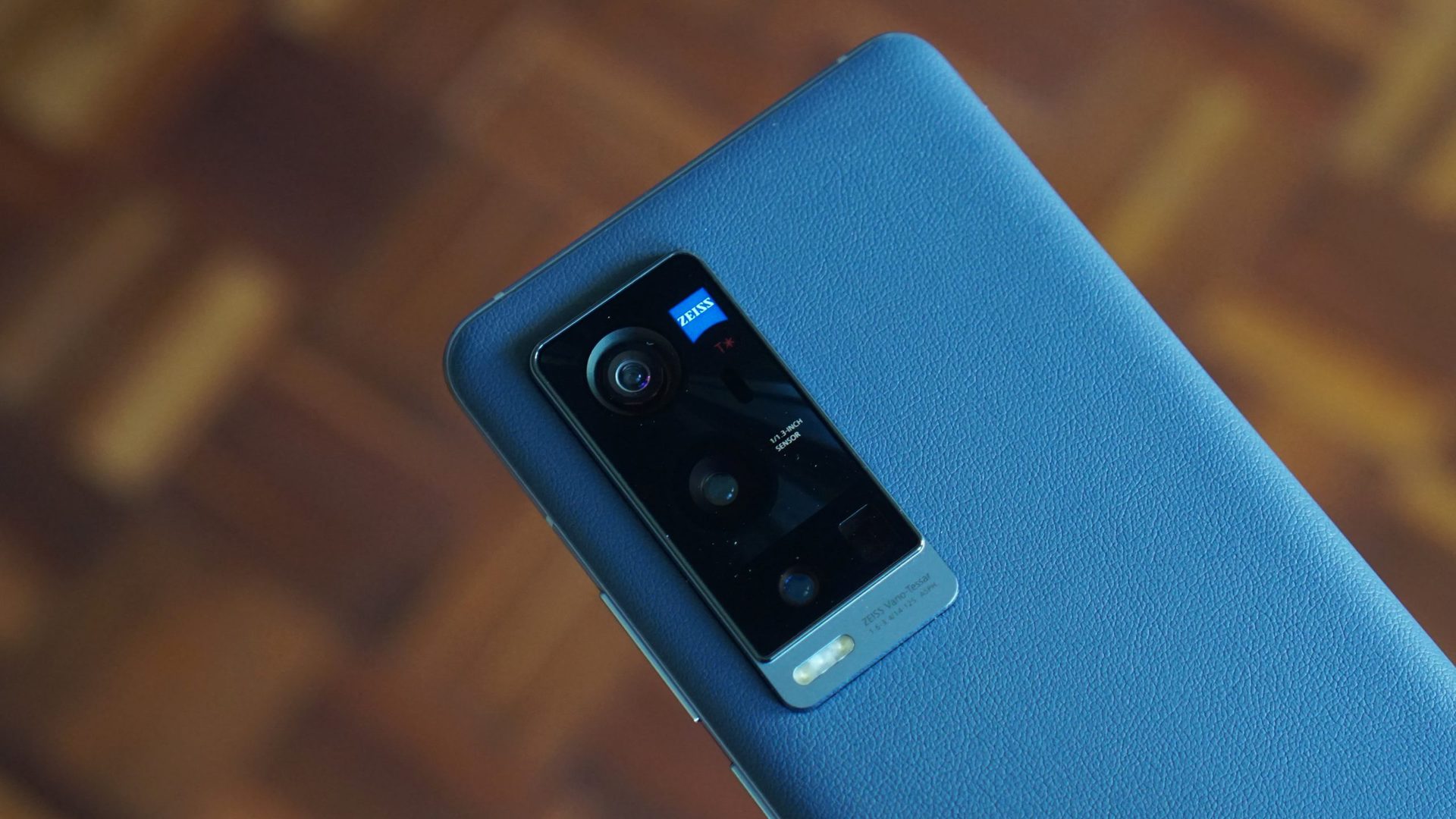
vivo X60 Pro Plus review: A flagship for camera enthusiasts
January 5, 2022
Vivo X60 Pro Plus
MSRP:
What we like
What we don't like
Our scores
Vivo X60 Pro Plus
vivo made headlines last year when it launched the X50 series with so-called micro-gimbal stabilization. We were very impressed by the first-generation setup offered by the company in 2020 and it briefly showed that innovation isn’t quite dead in the mobile imaging space. Now, vivo is stepping up to the plate again with renewed confidence thanks to the vivo X60 Pro Plus, which delivers a second-generation stab at the micro-gimbal concept. Has it returned with another winner? Find out in this vivo X60 Pro Plus review.
What you need to know about the vivo X60 Pro Plus
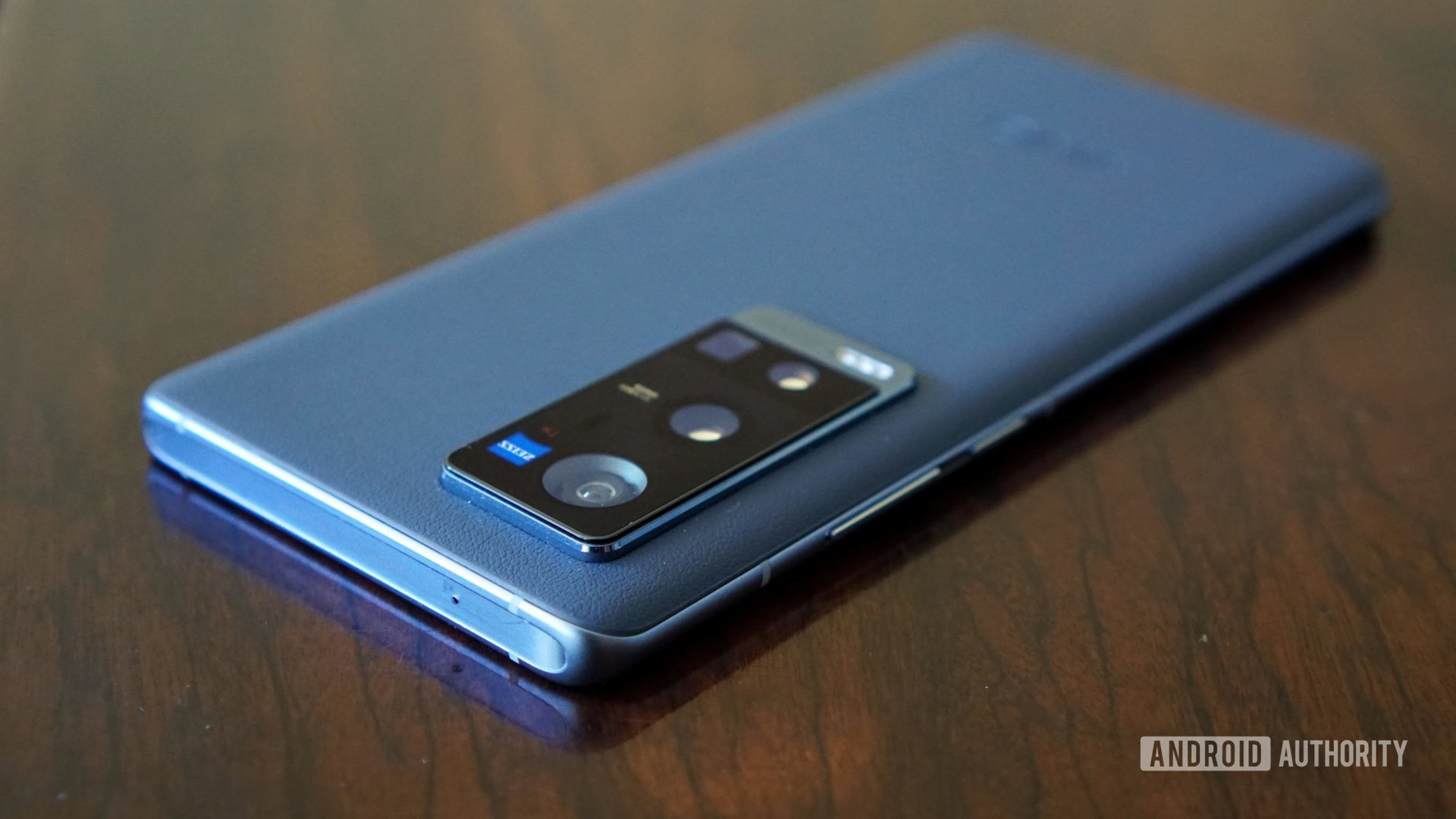
- vivo X60 Pro Plus (12GB/256GB): Rs 69,990 (~$963)
Vivo’s latest phone is a direct follow-up to the China-only X50 Pro Plus, which was one of vivo’s flagship releases last year. True to form, the X60 Pro Plus is indeed a flagship phone as well owing to its top-end core specifications.
Last year’s X50 series was the first to offer vivo’s micro-gimbal camera setup for stable video performance. The X60 series is equipped with a second-generation micro-gimbal camera system. Lending more weight to the photography focus is vivo’s partnership with camera firm Carl ZEISS. The X60 family is the first product lineup as part of an arrangement with the brand. The series also sports ZEISS’s lens coatings and the logo on the camera modules.
The vivo X60 Pro Plus is the marquee device in the X60 family.
The vivo X60 Pro Plus launched in China earlier in 2021 in Emperor Blue and Classic Orange colorways, but only the former is available outside its home market. The phone is only available in a 12GB/256GB option outside China, with an 8GB/128GB model available in China too. Speaking of availability, the phone is currently only confirmed for a wider launch in India. This could be a hard phone to get your hands on.
Vivo’s flagship comes with a 55W charger in the box, a USB-C cable, a plastic case, USB-C earphones, and a USB-C to 3.5mm adapter.
The Chinese company also has the standard X60 and X60 Pro in its stable. These phones differ from the Pro Plus by having the Snapdragon 870 chipset, slower wired charging (33W), a less impressive main camera sensor, a lower resolution ultrawide camera, and ditching the 5x periscope camera. Furthermore, the X60 Pro has a micro-gimbal on the main camera instead of on the ultrawide like the Pro Plus, while the standard X60 completely lacks a micro-gimbal system.
Design: Leather but not all the luxuries
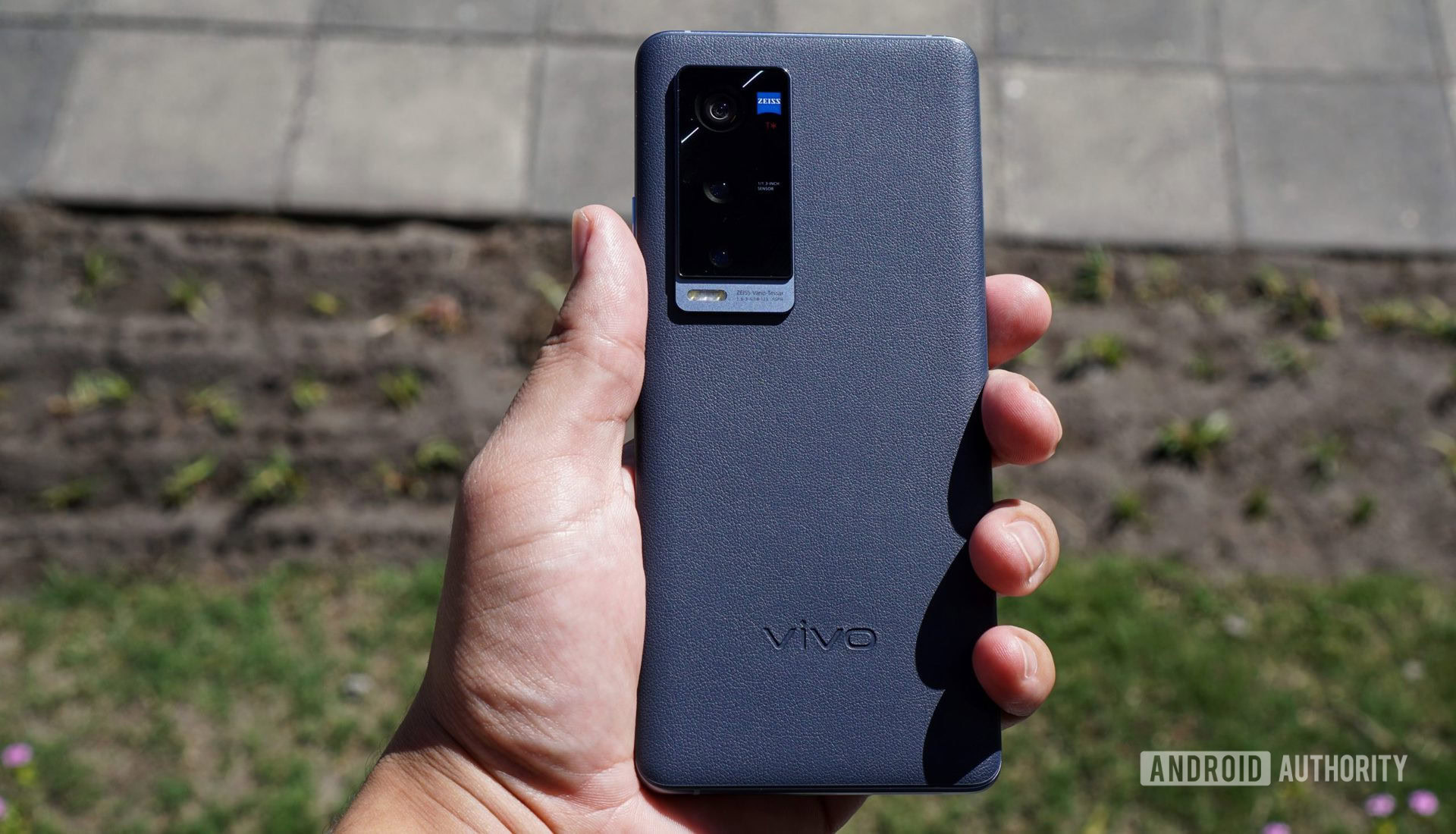
- Corning Gorilla Glass
- 158.59 x 73.35 x 9.1mm
- 191g
- In-display fingerprint sensor
- No IP rating
- USB-C
- Single speaker
- Vegan leather in Emperor Blue
Last year’s OPPO Find X2 Pro delivered a rather cool vegan leather/faux leather/pleather back, echoing efforts in bygone years from the likes of LG and HUAWEI. So color me disappointed when the Find X3 Pro skipped this option in 2021. Fortunately, vivo has picked up the baton.
The X60 Pro Plus sports an aesthetically pleasing faux leather back that gives it a premium feel. This also has the added upside of not being a fingerprint magnet or splintering with fall damage like glass designs. Throw in the metal frame and concave bottom, and you won’t mistake it for a budget device. The X60 Pro Plus model I tested came in Emperor Blue. The photos of the phone make it look extremely blue, but it looks closer to gray in person.
I also quite liked the phone’s textured power button. This means you can easily tell the difference between the power and the volume rocker. It’s not a big deal but it’s a little touch that’s appreciated nonetheless. Otherwise, the phone is pretty slim and light.
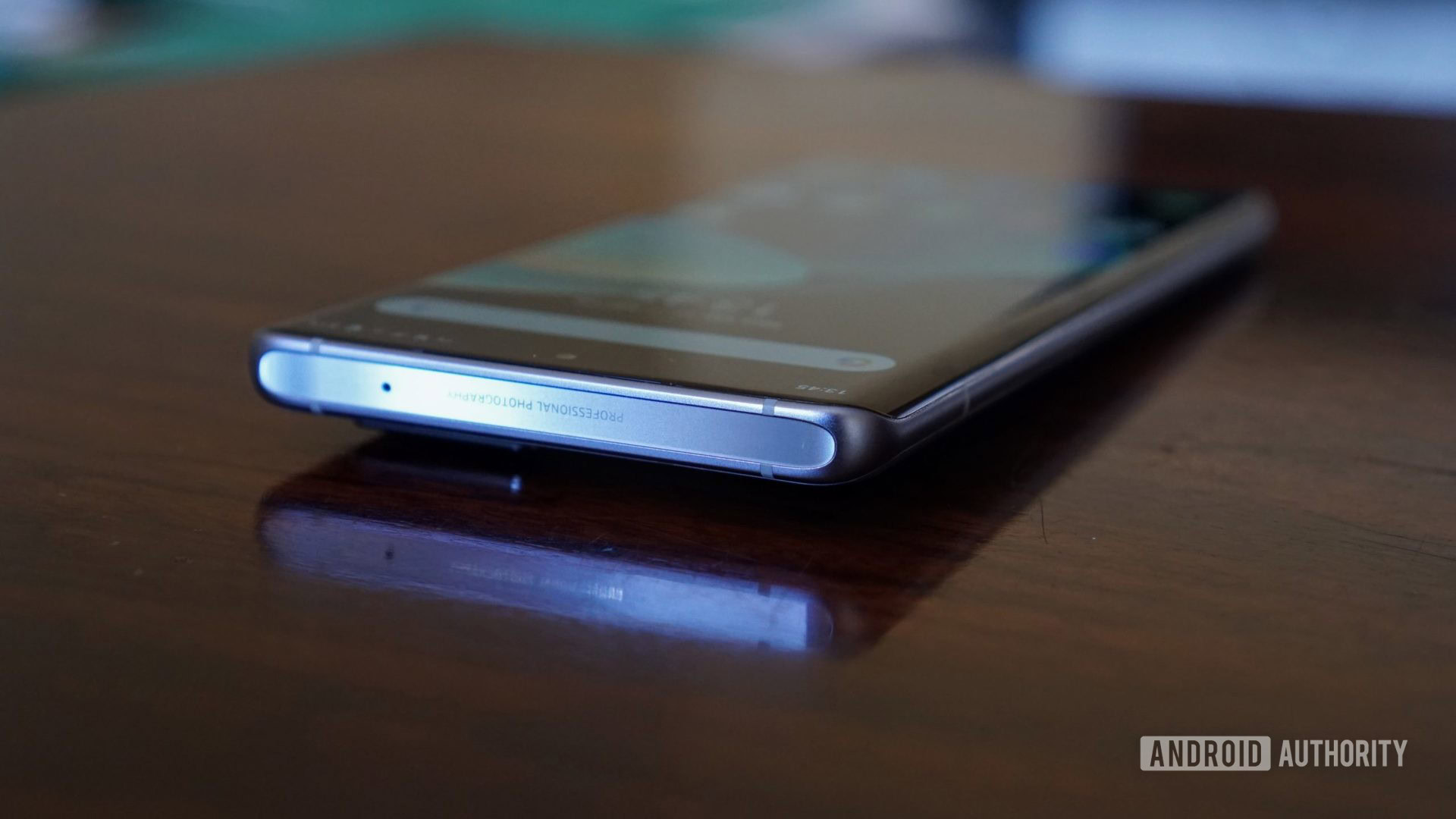
There is one major downside to the phone’s design though: the huge camera housing. The two-step camera bump is easily one of the biggest you’ll find on a phone today. This wouldn’t be a problem if it didn’t have practical disadvantages.
For one, the phone wobbles a lot if you touch the left side of the screen while the device is on a flat surface. This occurs even with the included plastic case attached. Another minor inconvenience due to the size of the camera hump is that your index finger occasionally rests on it, forcing you to be conscious of how you hold the phone sometimes.
The X60 Pro Plus sports a faux leather back that gives it a premium feel.
One truly unwelcome compromise is the lack of an IP rating. The Find X2 Pro managed to deliver a water-resistant design despite the faux leather back, so vivo can’t really use this excuse to justify giving the feature a skip. With $800 phones like the Galaxy S21 bringing an IP68 rating, there’s no excuse here.
As for audio, the phone packs a single-firing speaker that gets pleasantly loud for podcasts and the like. However, the lack of stereo speakers and the fact that it can be muffled by putting your hand over it are clear downsides to this setup.
The vivo X60 Pro Plus flagship stands out from the sea of glass-backed phones we’re used to seeing at this price-point. However, it does come at the expense of a huge camera bump to accommodate the gimbal-centric setup. The lack of an IP rating and stereo speakers is also highly questionable considering the price tag.
Display: Fluid FHD+
- 6.56-inch AMOLED with punch-hole
- FHD+
- 398ppi
- 120Hz refresh rate
Last year’s China-only X50 Pro Plus served up a 6.56-inch FHD+ 120Hz AMOLED screen, and we see the same panel this time out. In fact, the only real change is the move from a punch-hole cutout on the left side to a center-mounted hole instead. The display is nevertheless an upgrade over the X50 Pro’s 90Hz AMOLED panel.
The X60 Pro Plus screen is large, but it’s a manageable size compared to some of the nearly seven-inch behemoths that are out there. This size and FHD+ resolution also means you’ve got 398 pixels per square inch — so those worried about blurry text and app icons can rest easy. The phone also gets decently bright and remained viewable outdoors in the sun, even while watching videos.
It’s worth noting that the X60 Pro Plus’ screen is actually curved, but it’s definitely at a less severe angle than many other phones out there. I haven’t had any issues with palm rejection either, which is one of the biggest issues with handling phones with curved displays. The in-display fingerprint sensor is fast and very accurate too, with few cases of it not working the first time.
The X60 Pro Plus doesn't have the fastest refresh rate or the highest resolution, but the screen still delivers the goods.
In terms of the higher refresh rate, the new phone sports a 120Hz panel, with the phone defaulting to a “smart switch” profile to intelligently step between 60Hz and 120Hz. Fortunately, you can manually choose between 60Hz and 120Hz rates as well, so those who want to conserve battery life or those who want the smoothest experience possible are catered to here. The only minor downside in this regard is that there’s no 90Hz toggle for those wanting the best of both worlds.
Performance: Hanging with the best
- Qualcomm Snapdragon 888
- 12GB LPDDR5 RAM
- 256GB UFS 3.1 storage
Qualcomm’s Snapdragon 888 SoC is the top dog of the Android phone world at the moment. So it stands to reason that performance should be very smooth, right?
Third-party benchmarks all show pretty great scores in line with other Snapdragon 888 flagships like the Mi 11, Galaxy S21 series, and the OnePlus 9 and 9 Pro. The X60 Pro Plus completed our Speed Test G benchmark in a respectable 80 seconds, with its CPU and GPU performance being faster than the S21 Ultra. But it’s let down a little in mixed CPU/GPU performance, which sees Samsung’s phone streak ahead. Nevertheless, this time puts it just behind the S21 Ultra (78.9 seconds) and ahead of the Find X3 Pro with its default power mode (90 seconds).
You shouldn’t suffer from any issues when it comes to general performance. The phone launches apps in no time flat, multi-tasking is a brisk experience, and scrolling doesn’t yield any judder. In fact, the only time you’ll encounter any sort of hanging is when you’re taking full-resolution 50MP photos.
A sure-fire way to put silicon to the test is to turn to games, and the X60 Pro Plus handled pretty much everything I threw at it ran smoothly. Gameplay in emulated titles like Super Mario Sunshine, F-Zero GX, and Metroid Prime in Dolphin ran at a very playable pace for the most part.
Snapdragon guide: All of Qualcomm’s smartphone processors explained
I also tried out a variety of Android games such as Call of Duty Mobile, Genshin Impact, and Nascar Heat. These all ran at a fluid pace with only the occasional frame drop in Genshin Impact. Nascar in particular is a major workout for many phones owing to the huge field of cars on-screen, and performance was slick throughout.
One added benefit of the faux leather back is that the rear of the phone doesn’t heat up when gaming. However, the screen area and metal edge in the top half of the phone do get very warm.
The X60 Pro Plus doesn’t have microSD support, but you get a sizable 256GB internal storage to play with. Unless you have all your videos and a ton of games on the device, you likely won’t notice the omission.
Battery: Wired only
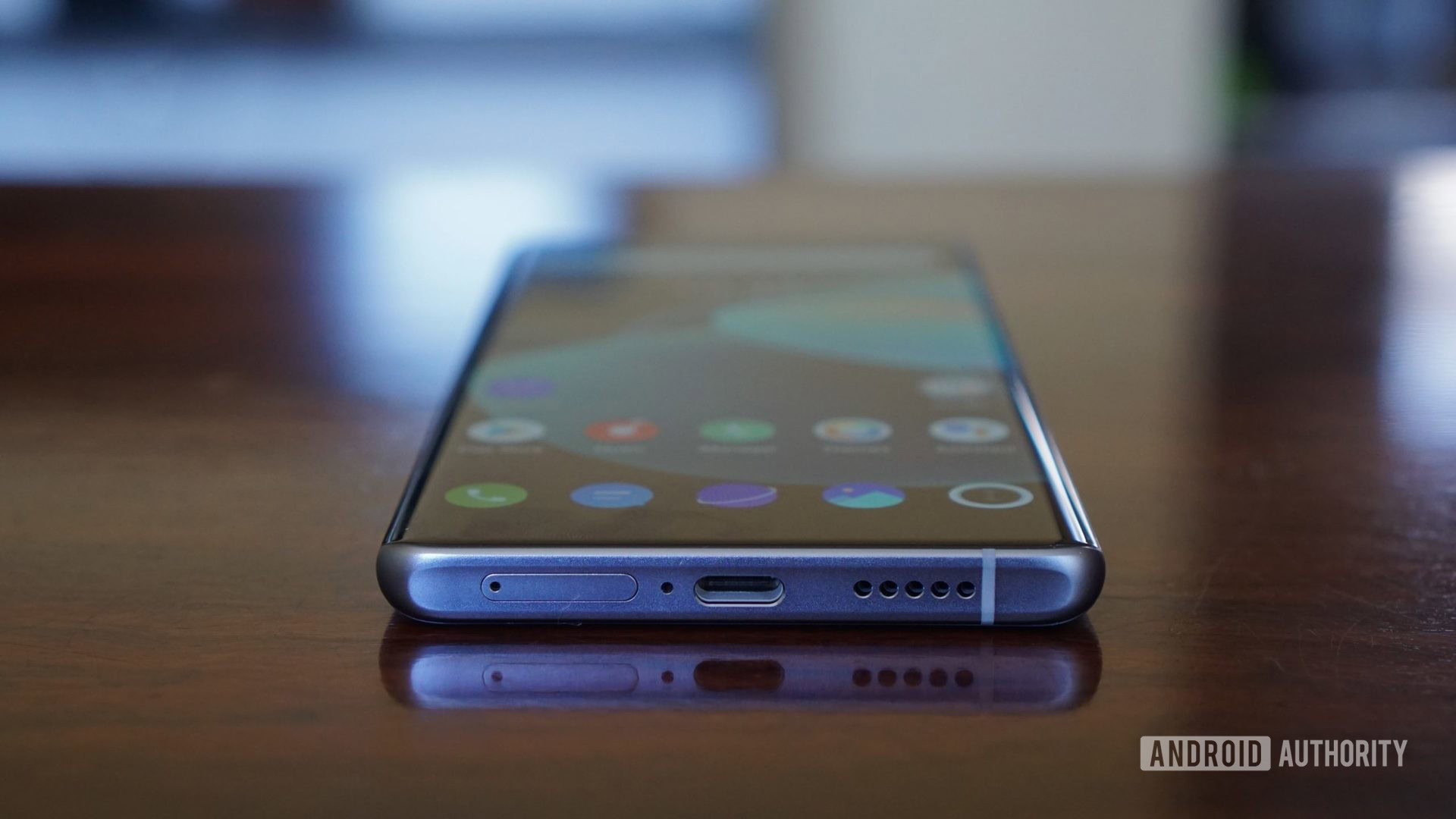
- 4,200mAh battery
- 55W wired charging
- Charger in the box
- No wireless charging
Oddly enough, the vivo X60 Pro Plus actually sees a slight drop in battery capacity compared to last year’s X50 range. The 4,200mAh battery is still a decent size, but what does this mean for usage?
One of the heavier days saw me using the phone as a mobile hotspot for just over 90 minutes, running various benchmarks, taking some photos, and reading via the Kindle app (with the smart refresh rate option enabled). The phone still managed to last until bedtime with ~10% juice remaining. A less intensive day consisting of Reddit browsing, reading ebooks, web browsing, and about 30 minutes of Genshin Impact yielded over five and a half hours of screen-on time. In this instance, the phone managed to last until about mid-afternoon the next day with light usage.
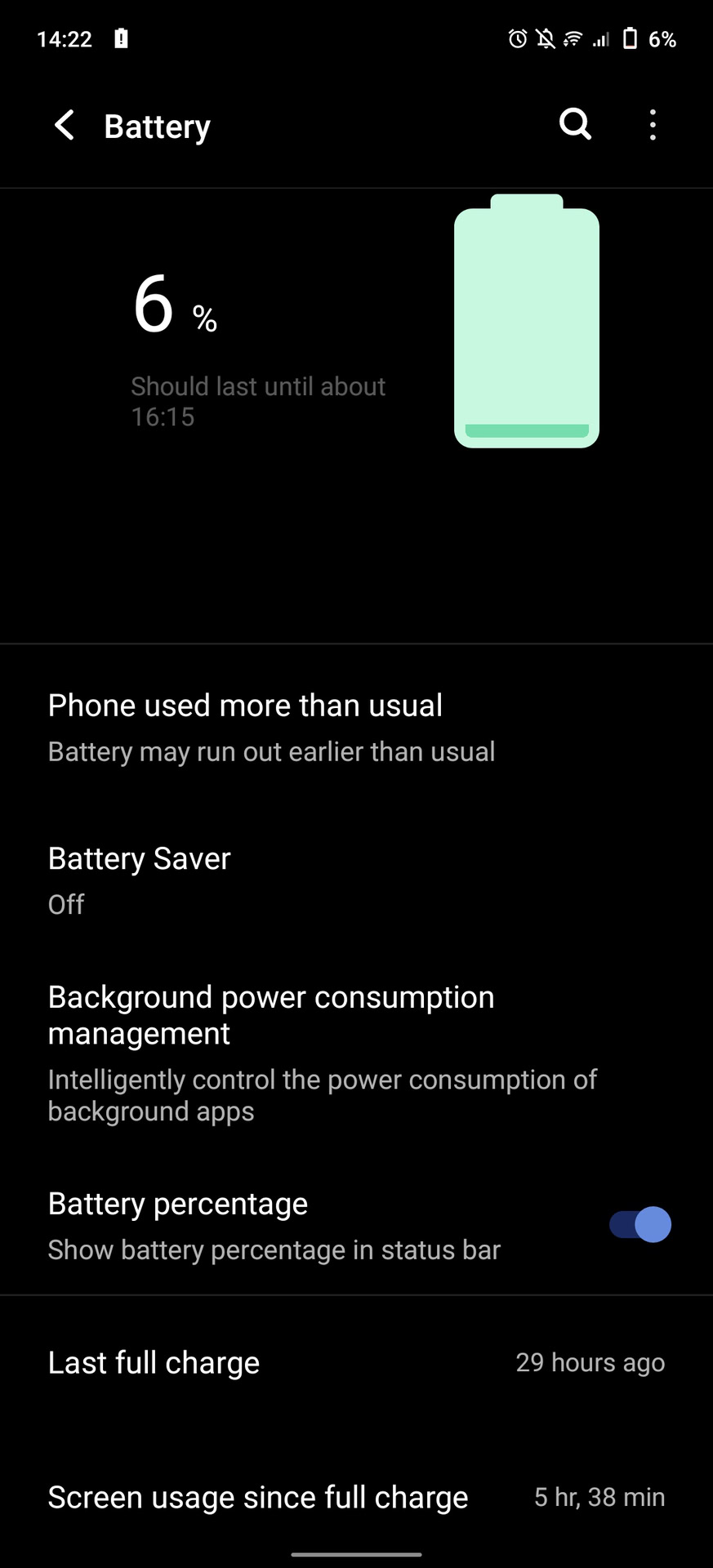
Switching to locked 60Hz and undertaking a heavy day of usage while on a recent vacation (two and a half hours of GPS navigation, plenty of photos taken, Reddit browsing) yielded roughly five and a half hours of screen-on time. Those are some solid results with the reduced refresh rate and a heavy workload.
Either way, the X60 Pro Plus doesn’t quite offer two days of endurance with the default smart refresh rate setting enabled. But a full day and some change is certainly possible even with the smart refresh rate activated.
The X60 Pro Plus supports rapid wired charging but it'd be fair to expect wireless charging too.
Once you’ve depleted the battery, 55W wired charging tops up your phone in about 45 minutes. That’s plenty fast and puts the likes of Samsung and LG to shame, while also being just a few minutes short of faster 65W standards from the likes of OPPO, realme, and OnePlus.
However, Samsung and LG do have the X60 Pro Plus beat for wireless charging because it’s not supported at all. This isn’t a big deal in practice when wired charging is so fast to begin with, but it’s absolutely fair to expect some form of wireless charging for the price.
Camera: Gimbal gamble pays off
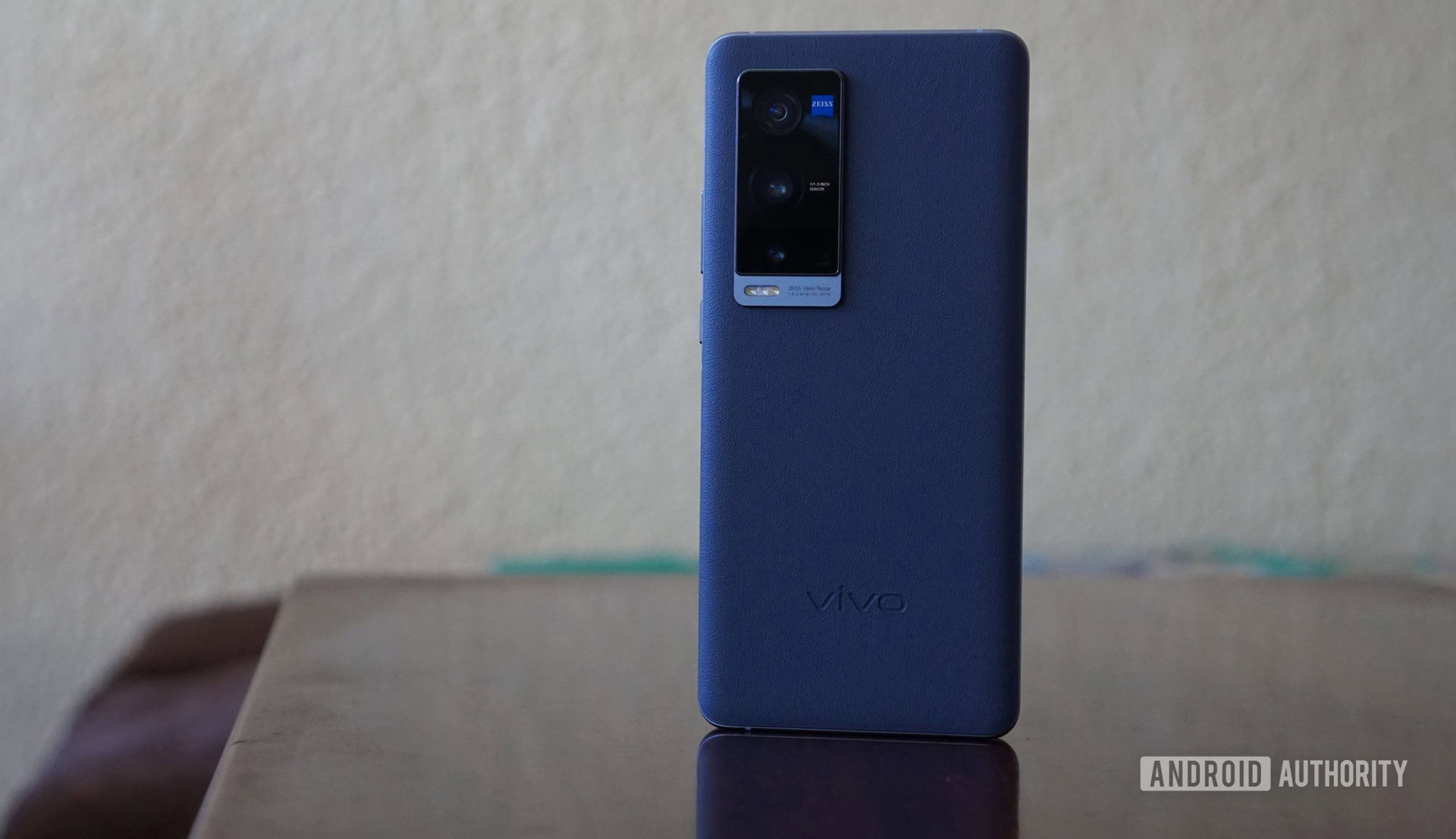
- 50MP (f/1.57, OIS)
- 48MP ultrawide (f/2.2, micro-gimbal)
- 32MP telephoto 2x optical (f/2.08)
- Periscope: 8MP 5x (f/3.4)
- Front: 32MP (f/2.45)
- Video: 8K at 30fps, 4K at 60fps
The new flagship has a few things in common with its predecessor. The most notable carryover is the Samsung Isocell GN1 50MP sensor for the main shooter. The phone launched just before Samsung announced the GN2, which offers bigger pixels, but I was still pleased with the results from this snapper.
Related: The best camera phones you can get
The main camera (and the rest of them, for that matter) veers towards a saturated look. It can occasionally go overboard but it usually delivers eye-pleasing colors. There’s some wide dynamic range to be had here too, and you’re able to capture some difficult scenes (check out the first two images in the gallery below). The HDR can be a little too aggressive at times, resulting in parts of a scene looking washed out. Check out the mountains and foliage in the second image. That said, it does a good job of letting us see the clouds and the interior of the home. Good stuff.
The main camera offers optical image stabilization in lieu of the micro-gimbal setup, but the phone still delivers some bright, blur-free shots at night. There’s also an astro mode here, which captures plenty of stars and can hold its own even when compared to the Google Pixel series’ heralded astrophotography feature. vivo’s mode does a better job of capturing the foreground details too, while Google’s implementation generally leaves this darker. Check out the mountains in the pictures below.
Vivo’s phone was also able to capture the detail in the windows in the scene with the house below, while Google’s device whited out the curtains almost entirely. The Google image also seems to have a window-shaped artifact on the left side of the sky, presumably due to a frame stacking glitch. It’s not a complete win for vivo though. I still feel like Google’s mode offers a much more aesthetically pleasing hue for the sky in some cases (such as the example with the mountain), and the vivo phone doesn’t always get colors right for the foreground.
We’ve also seen a growing trend of OEMs adopting high-resolution ultrawide cameras, and the vivo X60 Pro Plus is no exception. The 48MP ultrawide snapper is capable of capturing shots that offer similar color consistency and the same dynamic range as the main camera. We don’t see nearly the same level of detail as the main shooter and details are mushy in the corners. The field of view isn’t quite as wide as some rival devices either, although it’s still wide enough to be a fun addition.
vivo has added micro-gimbal stabilization to the ultrawide camera as well for its second-generation. The result is that you can use the ultrawide lens for some impressive night mode shots. These images manage to narrow the gap to the main camera in mixed or extremely dark lighting. The ability to take great night shots with this secondary shooter is welcomed, as contemporary phones often have ultrawide cameras that are completely useless at night. There’s still plenty of room for improvement though, as brightness and noise aren’t quite at the level of the main camera in this mode. Additionally, standard low-light photos via the ultrawide camera still see a huge drop in quality compared to images taken with the main camera. The ultrawide camera lacks an astro mode too.
vivo equipped the ultrawide camera with autofocus which means you can take macro photos too. The addition of autofocus also means you can get creative with your shots, such as focusing on the foreground and vice versa.
The X60 Pro Plus also packs two zoom-focused cameras: a 32MP 2x telephoto lens and 8MP 5x periscope snapper. The latter, in particular, represents a decent improvement over 5x hybrid zoom seen on phones with 3x telephoto cameras — although you might have to pixel-peep to spot the difference on the odd occasion. Detail quickly falls off a cliff when you zoom past 5x though. You might get usable results in some situations, but a watercolor effect and blurry edges make themselves known when going beyond the native zoom factor.
Selfies in broad daylight offer plenty of detail, although there is a noticeable dip in detail and some visible noise indoors. The front camera also delivers wide dynamic range, keeping your face lit even with bright backgrounds such as the sunny sky. But images in these situations can appear washed out as well, as we see below.

The vivo X60 Pro Plus has some pretty extensive video recording capabilities, delivering 8K/30fps recording, 4K/60fps video, 720p/480fps slow-mo (or 1080p/240fps), super night video, and noise reduction functionality. The phone also allows you to use standard or “ultra-stable” stabilization (using the micro-gimbal), but unfortunately, the latter is limited to 1080p/60fps.
This sample I took shows some great stabilization and only minor wobble, delivering an otherwise smooth experience. That’s more than can be said for the 8K/30fps mode, which features noticeable stutter. Hopefully a software update brings ultra stable recording to 4K video.
We’re quite happy with vivo’s camera app, delivering a sensibly designed UI. You’ve got the usual carousel of modes accessible by swiping left or right, as well as a “more” option to see all the modes at your disposal. Other notable modes here include a somewhat dubious supermoon mode, a double exposure mode, slow shutter functionality for light trails, and a Pro Sports mode to capture fast-moving subjects. We’ve also got the usual elements here, such as an AI scene recognition toggle, flash toggle, HDR toggle, and a macro mode switch.
One element I quite liked was the way vivo handles full resolution shooting. The camera app has a specific high-resolution mode here much like a standard photo mode, but you get a brief snippet of text noting the full resolution you’ll be getting with each camera. So switch to 2x and the text will note that you’re getting 32MP shots, or switch to ultra-wide and it’ll briefly tell you that you’ll be capturing 48MP shots. It’s a more intuitive, faster solution than simply hiding the full resolution option in the hamburger menu as other phones do.
For a better look at the vivo X60 Pro Plus camera capabilities, you can check out full resolution samples in this Drive folder.
Software: New look, same bloat
- Android 12
- FunTouch OS 12 Global
Vivo’s Achilles Heel has long been its software, with FunTouch OS growing an unenviable reputation of being a poor iOS clone. Fortunately, the company has improved matters in recent years. The current global take on FunTouch OS is definitely more in line with the stock Android aesthetic. Most importantly, the Apple-inspired Control Center has been banished in favor of a regular notification shade and quick toggle menu.
It also seems like vivo has been listening to feedback. On the X50 series, swiping down on the homescreen resulted in vivo’s own global search function being activated. There’s now a toggle for this, allowing you to access your notification shade instead like any other Android device.
It’s not all sunshine and roses with the software though, as the phone ships with a pretty ridiculous amount of bloatware. There’s vivo’s own app store, Hot Apps and Hot Games icons that highlight various other apps, Flipkart, Dailyhunt, Prime Video, Facebook, the vivoCloud service, a Game Center service, Snapchat, and the Jovi assistant.
Another concern is software updates, as vivo doesn’t have a Google or Samsung-style minimum guarantee for updates and patches. The firm has been gradually dishing out updates to several more recent devices, but not all vivo phones are so lucky. 2019’s vivo Nex 3 flagship still hasn’t received Android 11 and received Android 10 eight months after release. For what it’s worth, the X60 Pro Plus has already received the Android 12 update with FunTouch OS 12, so things seem to be off to a solid start.
vivo X60 Pro Plus specs
| vivo X60 Pro Plus | |
|---|---|
Display | 6.56-inch FHD+ 1,080 x 2,376 AMOLED, HDR10+ 120Hz refresh rate 240Hz touch response In-display fingerprint sensor |
Processor | Qualcomm Snapdragon 888 Adreno 660 GPU |
RAM | 12GB |
Storage | 256GB Non-expandable |
Battery | 4,200mAh 55W wired charging No wireless charging |
Cameras | Rear: 50MP standard at f/1.57, OIS 48MP Ultra-wide at f/2.2, micro-gimbal 32MP 2x telephoto for portraits at f/2.08 8MP 5x periscope sensor at f/3.4 Video: 8K at 30fps, 4K at 30/60fps, 1080p at 30/60/120/240fps, 720p at 480fps Front: 32MP |
IP rating | N/A |
Headphone jack | N/A |
Connectivity | NFC Wi-Fi 6 Bluetooth 5.1 Supports SBC, AAC, aptX HD, LDAC codecs |
Software | Funtouch OS 11.1 Android 11 |
Dimensions and weight | 158.59 x 73.35 x 9.1mm 191 grams |
Value and competition
At Rs 69,990 (~$963) in India, the X60 Pro Plus is definitely in premium flagship territory even if it doesn’t quite breach the ~$1,000 mark.
The phone is similarly priced as the standard Galaxy S21 in India (Rs 69,999), and almost identically priced as the top-spec model of the OnePlus 9 Pro (Rs 69,999). Those wanting the cheapest Snapdragon 888 phone period can opt for the Rs 49,999 (~$688) OnePlus 9.
See also: The best Android phones
vivo isn’t pushing the X60 Pro Plus as an affordable flagship, though. For the money, you’re getting an extremely well-rounded camera setup by opting for this phone over most other devices. In fact, only the Rs 105,999 (~$1,458) S21 Ultra is offering a similarly flexible setup in 2021. But even Samsung’s device doesn’t have this gimbal system. Camera junkies will definitely want to consider this device.
However, those that want a complete premium flagship experience may be better served elsewhere. The X70 Pro Plus has succeeded the X60 Pro Plus, bringing wireless charging and water resistance. It also offers a QHD+ screen and a slightly larger battery. So you’re really getting quite a few upgrades for a similar price.
There are plenty of non-vivo alternatives as well. The OnePlus 9 Pro packs a similarly impressive main/ultrawide combo, a higher resolution OLED screen, faster charging, an IP68 rating, and wireless charging. Likewise, while the standard Galaxy S21 doesn’t have the periscope camera, a proper telephoto lens, the gimbal setup, or super fast wired charging, it does comes with water resistance and wired charging yet again.
Camera junkies will find a lot to like here, but the vivo X60 Pro Plus lacks some premium comforts.
Another major obstacle for consumers is the phone’s limited availability right now. vivo noted that the X60 Pro Plus would “first” be launched in India, but it hasn’t launched in other regions.
The X70 Pro is a cheaper, newer alternative to the X60 Pro Plus as well. It still packs a great camera setup, slick design and a 120Hz OLED screen. You do lose out on flagship horsepower though.
vivo X60 Pro Plus review: The verdict
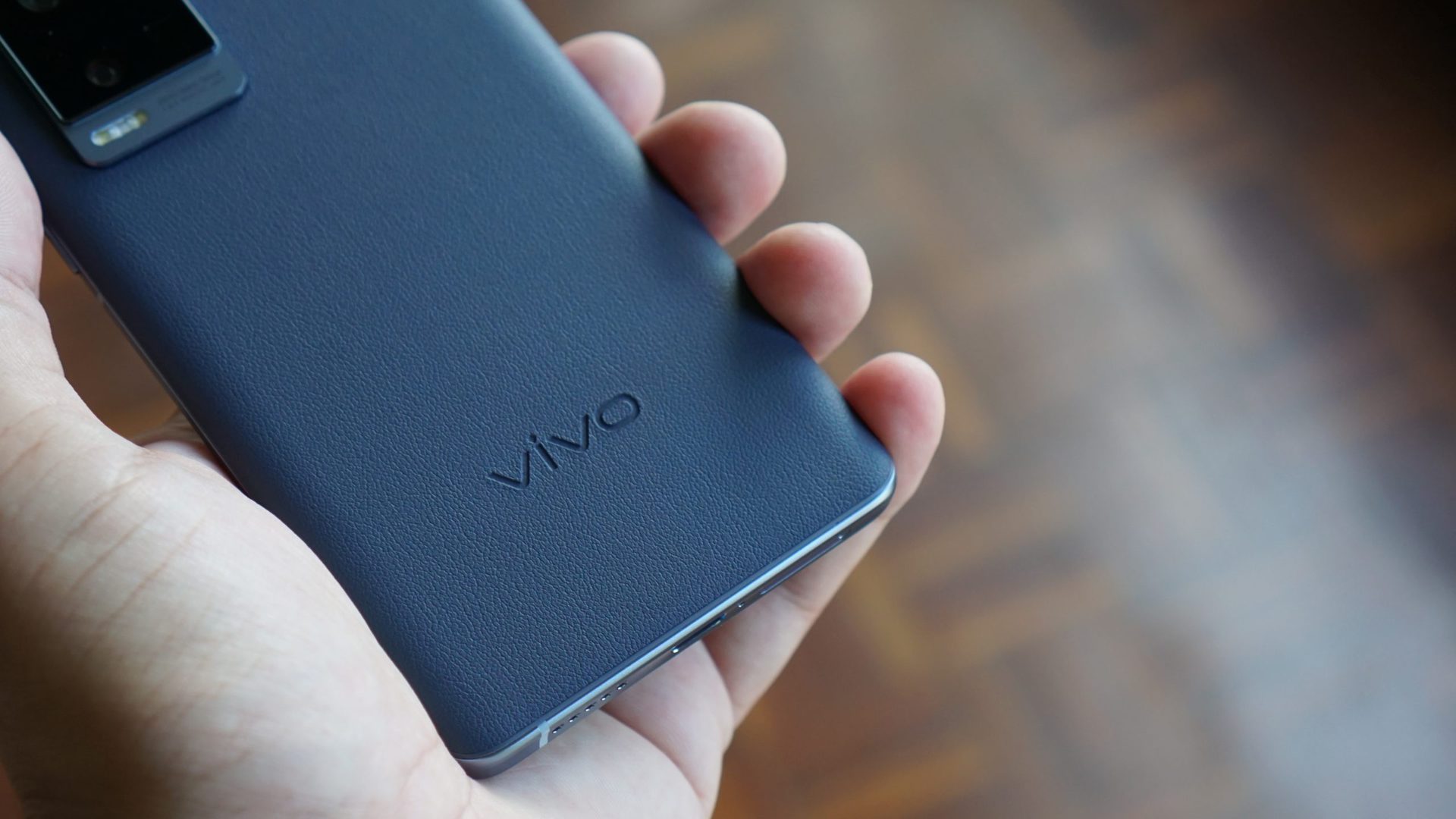
The vivo X60 Pro Plus delivers plenty of features we’ve come to expect in a premium flagship today, such as great main and ultrawide cameras, fast charging, and a ton of processing power. The phone also manages to stand out from rival flagships thanks to that gorgeous leather design, a pair of zoom-focused cameras, and the micro-gimbal setup for better ultrawide images and smooth video.
Competition is stiff though, as premium-tier devices like the Samsung Galaxy S21 and OnePlus 9 Pro all offer similar core features for the same price in India as well as wider availability. Plus, these phones feature wireless charging and an IP rating — two things the vivo X60 Pro Plus lacks. If you value a versatile camera experience above all else, those omissions may not bother you, but it’d be fair to expect both for the ~$960 asking price. The X70 Pro Plus offers both of these features, so you should definitely consider the newer phone if you appreciate premium extras like these.
The vivo X60 Pro Plus is worth considering if your top priority is a super flexible photo and video camera setup.
vivo clearly set out to master one category with the X60 Pro Plus, and it definitely succeeded in doing so. However, this does come at the expense of a well-rounded premium flagship experience. Is the trade-off worth it? You’ll need to ask yourself what do you value most in your smartphone.